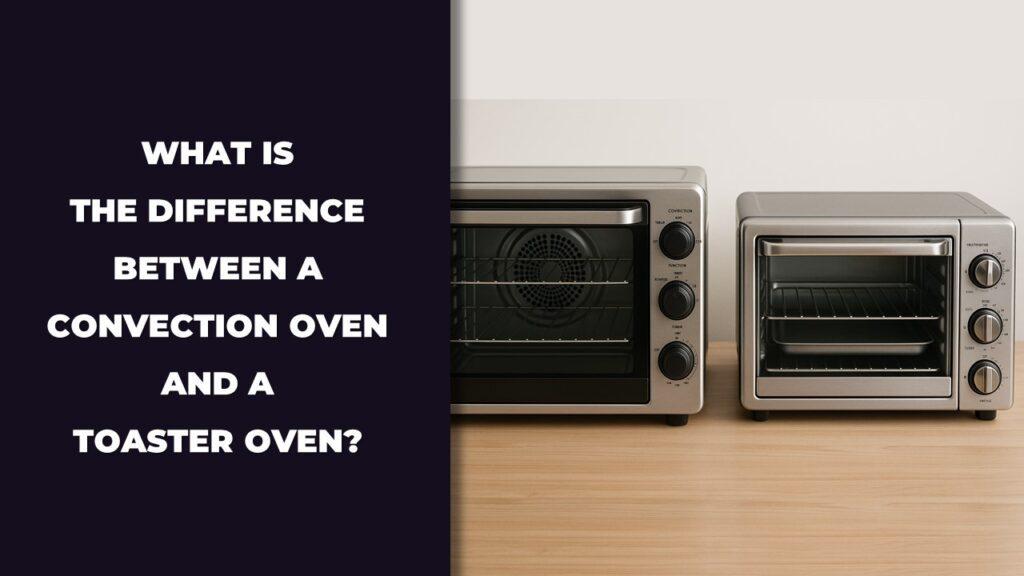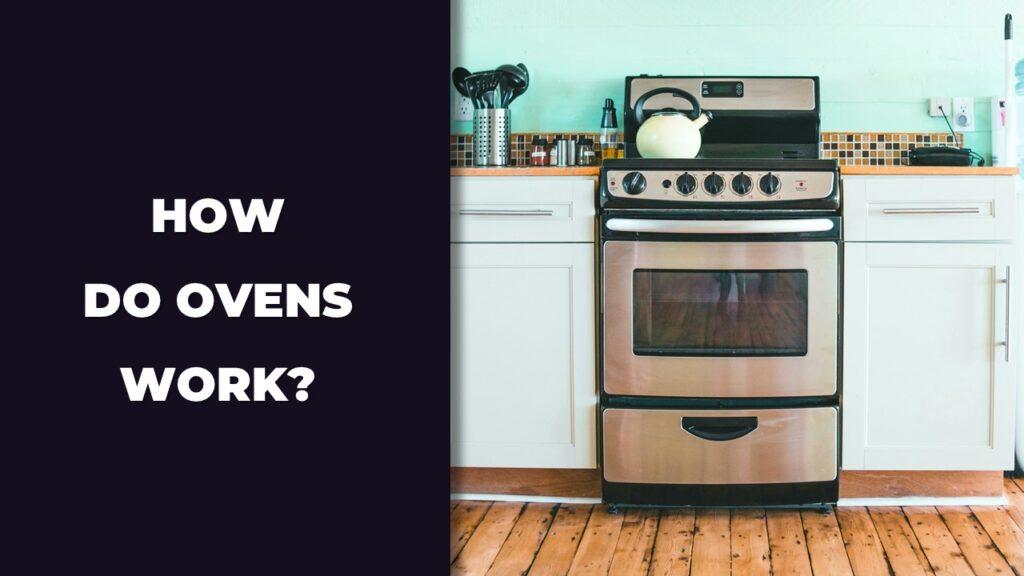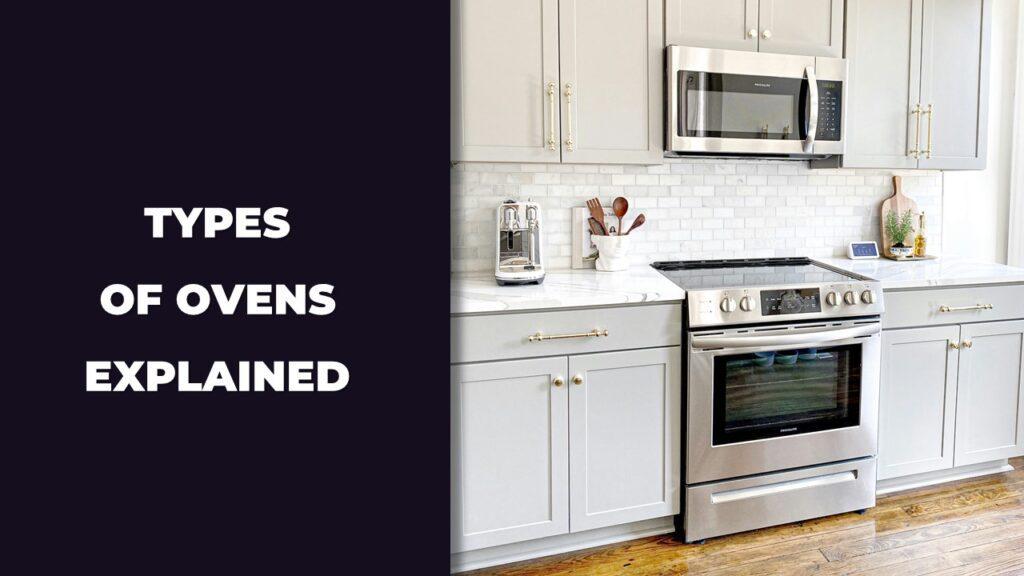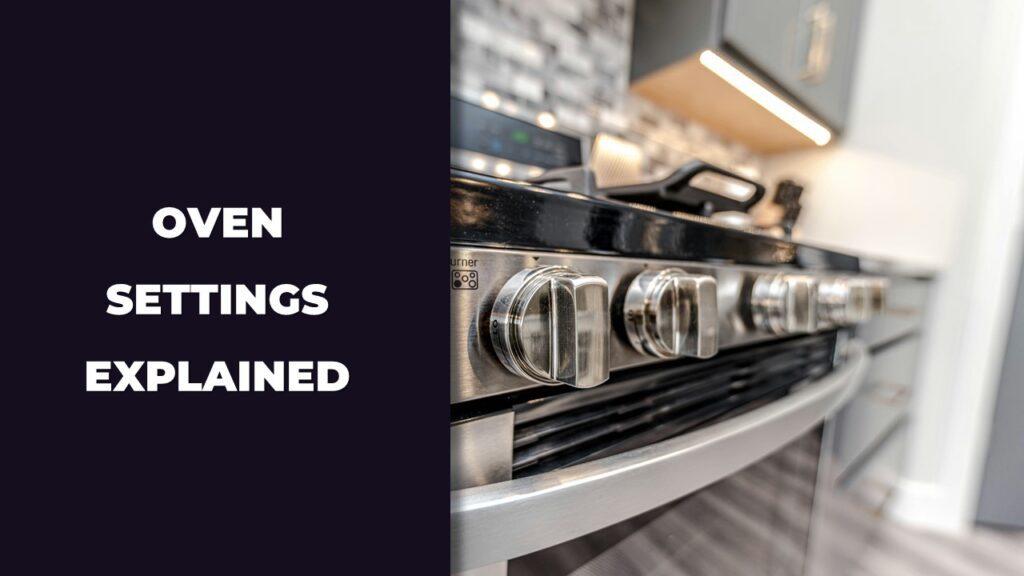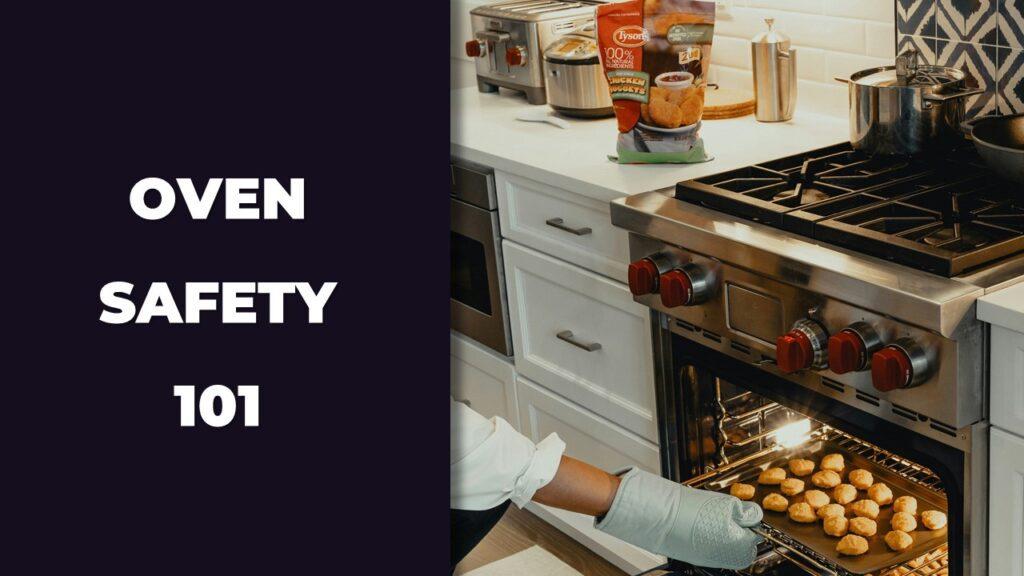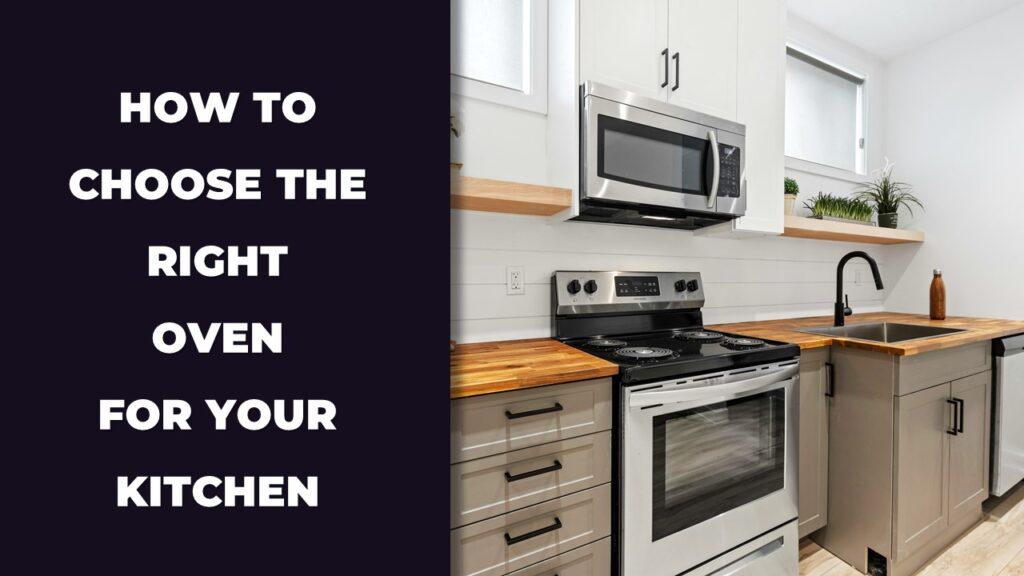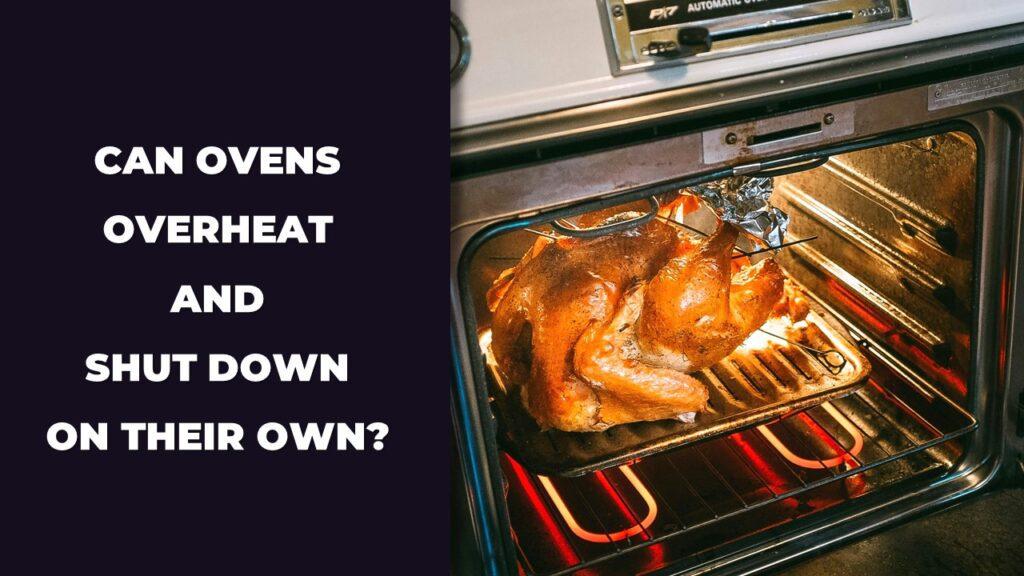
Yes, ovens can absolutely overheat and shut themselves off. Most modern ovens have built-in safety features, like thermal fuses, temperature sensors, and cooling fans. When the oven gets too hot, these parts step in to shut it down to prevent damage or even a fire. It’s not just a random shutdown. It usually means something’s off—like blocked vents, a faulty thermostat, or a broken fan.
In this article, we’re going to walk through why ovens overheat, how to spot the warning signs, and what you can do to fix or prevent it. Whether your oven stopped mid-roast or keeps turning off on its own, we’ve got clear answers and practical steps to help you sort it out.
Can Ovens Really Overheat And Shut Themselves Off?
Yes, ovens can overheat and shut off on their own. This is a built-in safety response triggered by parts like thermal fuses, temperature sensors, and high-limit thermostats. These components cut power to the oven when it gets dangerously hot to help avoid electrical damage or fires.
This auto shut-off usually kicks in when the oven’s temperature rises well above what it should be. Sometimes it’s caused by a faulty part, but other times it happens because airflow is blocked or a component like the fan or thermostat is acting up. The oven shuts down as a protective move, not necessarily because the oven is broken beyond repair.
Think of it like a car overheating and pulling over—it’s not the end, but it’s definitely a sign to look under the hood. If your oven keeps shutting off mid-cook or seems hotter than it should be, it’s worth checking for common issues or calling in a technician if things don’t improve.
Common Reasons Why Ovens Overheat And Shut Off
Ovens usually overheat and shut off because something is interrupting temperature control or airflow. This can be due to blockages, faulty parts, or electrical problems. The safety system kicks in to prevent further damage when these problems cause heat levels to go too high.
Let’s look at the most common causes that might be behind your oven overheating and shutting itself off:
Blocked Oven Vents Or Poor Air Circulation
If vents are blocked, heat builds up inside the oven instead of escaping. This throws off the internal temperature and can trigger the safety shut-off. Common causes include foil blocking vents, too many pans packed inside, or grease buildup around fan openings.
Make sure the back of the oven isn’t pressed too tightly against the wall, and never cover vents with foil or oversized pans.
Faulty Thermostat Or Miscalibrated Controls
The thermostat is what tells the oven when to heat up and when to stop. If it’s faulty or miscalibrated, the oven may keep heating without stopping, causing it to overheat. Some ovens let you recalibrate the thermostat through the control panel, while others might need a part replacement.
Always check your manual first. If recalibration doesn’t help, it’s probably time for a technician.
Damaged Temperature Sensor Or Probe
Most ovens have a thin metal rod inside that senses the oven’s actual temperature. If that sensor is damaged, misaligned, or loose, it can send the wrong signals to the control board, making the oven run hotter than needed.
You might notice food cooking faster than usual or the oven shutting off randomly. Replacing the sensor is usually a quick fix.
Cooling Fan Malfunction (For Electric And Convection Ovens)
The cooling fan keeps the control panel and other components from overheating. If this fan stops working, heat builds up around the electronics. The oven might shut down mid-cook or right after a long bake session.
Fans can get clogged with grease or simply burn out over time. If you don’t hear it spinning during use, that’s a red flag.
Failing Heating Elements (Electric Ovens)
If the heating element is cracked, warped, or shorted out, it might stay on longer than it should. That pushes the oven past its safe heat range and causes the thermostat or fuse to shut things down.
Unplug the oven before checking the element. If it’s glowing unevenly or shows visible damage, it needs to be replaced.
Overloaded Power Supply Or Faulty Circuit Board
Sometimes the issue isn’t with the heat at all. A failing control board or an overloaded power supply can also cause your oven to shut off. These electrical issues may trip internal relays when temperatures climb too high.
If your oven shuts down along with flickering lights or trips your home’s circuit breaker, it’s worth checking the board or wiring.
Self-Cleaning Mode Triggering Auto-Shutoff
During a self-cleaning cycle, ovens reach very high temperatures to burn off food residue. If something isn’t venting properly or the oven has a weak sensor, this heat can trip the auto-shutoff.
It’s not unusual for older ovens to struggle with self-cleaning cycles. If yours shuts off during this process, avoid using self-clean mode until it’s checked.
Signs Your Oven Is Overheating Before It Shuts Off
Here are some of the signs that your oven is overheating before it shuts down:
- Food cooks too quickly or burns at normal settings
- Oven door or control panel feels hotter than usual
- Fan runs for a long time, even after the oven is off
- Blinking lights or error codes on the display
- Oven loses power in the middle of cooking
These signs usually show up before the oven actually shuts off. Paying attention early can help you fix the issue before it damages your appliance or ruins another meal. Below, we’ll explain what each sign means and what it could be telling you about your oven.
Food Overbakes or Burns At Normal Settings
When your go-to settings start failing you—like cookies burning at 350°F or lasagna bubbling too fast—it’s usually a red flag. The oven might be running hotter than the display says. This often points to a thermostat or sensor issue.
You can test the accuracy by using an oven-safe thermometer placed on the center rack. If the reading is off by more than 15–20 degrees, it may be time to recalibrate or replace the sensor.
Oven Door Or Control Panel Feels Excessively Hot
While it’s normal for an oven to get warm, it should never feel too hot to touch on the outside. If the control panel or door feels like it’s burning your hand, something’s wrong inside.
This often means poor airflow or a failing cooling fan. The heat isn’t being pushed out efficiently, so it builds up around sensitive components. Ignoring this can lead to shut-offs and long-term damage.
Oven Fan Keeps Running After Power Off
Most modern ovens use a cooling fan to help reduce internal temperatures after cooking. But if your fan keeps spinning for more than 10–15 minutes after shutdown, it could mean the oven got too hot during use.
This behavior is the oven’s way of trying to cool itself down. If it happens often, it’s worth checking for blocked vents, dirty fan blades, or problems with the fan motor itself.
Error Codes Or Blinking Lights On Display
If your display starts flashing random codes or lights, the oven is likely trying to tell you something. Many ovens have error codes tied to overheating, like “F1,” “F3,” or “ERR TEMP.”
Refer to your oven’s manual for code meanings, or look them up on the brand’s website. These codes can point to issues with the thermostat, sensors, or control board, especially when heat is involved.
Sudden Power Loss Mid-Cooking
If the oven shuts off while baking or roasting, and your breaker didn’t trip, that’s a big warning sign. Overheating protection may have kicked in to prevent a fire or system failure.
This kind of shut-off usually happens after the oven has been running a while and the heat builds beyond the safe limit. The fix might be as simple as clearing vents, or it could involve replacing a bad thermal fuse or control board.
How To Troubleshoot An Oven That Overheats And Shuts Down
If your oven overheats and shuts off, start by checking airflow, temperature settings, and the condition of key components. Built-in safety features like thermal fuses or sensors may be reacting to an underlying problem that needs attention.
Troubleshooting doesn’t always require tools or tech skills. Here are a few practical steps to help you figure out what’s wrong:
- Check The Oven Vents: Look inside and behind the oven to make sure vents aren’t blocked by pans, foil, or grease buildup. Poor airflow traps heat and can trigger the shutdown.
- Inspect The Cooling Fan: Listen for the fan while the oven is on. If it’s noisy, weak, or silent, it may be struggling or not working at all, which can cause overheating around internal parts.
- Use A Thermometer To Test Accuracy: Place an oven-safe thermometer in the center and compare the reading to your set temperature. If it’s off by 15–25°F, your sensor or thermostat might need recalibration or replacement.
- Look For Error Codes Or Blinking Lights: These can point to issues with temperature sensors, the control board, or safety shut-off systems. Check your user manual for what the codes mean.
- Unplug And Inspect Heating Elements (For Electric Models): Let the oven cool, then inspect the bake and broil elements for signs of damage or scorching. A faulty element can keep heating nonstop.
- Check The Circuit Breaker Or Outlet: If your oven shares power with other appliances, overloaded circuits can affect its ability to cool and shut down safely.
- Call A Technician If Needed: If none of these steps help or you suspect a deeper electrical or sensor issue, it’s time to get a qualified appliance tech involved.
Differences Between Gas And Electric Ovens Overheating
Gas and electric ovens can both overheat, but the causes and warning signs are often different. Understanding how each one behaves helps you pinpoint what might be going wrong in your specific model.
Gas Ovens
- Gas Supply Issues: If the gas valve is partially blocked or malfunctioning, the flame might be irregular, causing inconsistent heating that builds up over time.
- Ignition Delay or Flame Misfire: Faulty igniters can cause long preheats or bursts of flame, which can overheat the cavity.
- No Built-In Cooling Fan: Many gas ovens don’t use a fan for internal airflow, so heat doesn’t move out as quickly. That makes ventilation even more important.
- Harder To Recalibrate: Calibrating a gas oven’s temperature usually requires more manual steps and is better left to a technician.
Electric Ovens
- Faulty Heating Elements: Burned or shorted bake/broil elements may continue heating past the target temperature.
- Sensor or Thermostat Failure: If the sensor misreads the temperature, the control board may keep the element running too long.
- Fan Malfunction: Electric ovens often rely on internal fans to cool both the oven cavity and control board. If the fan fails, heat builds fast.
- More Error Codes: Electric ovens often display codes that can help you trace the issue; gas ovens rarely have this feature.
Can An Overheating Oven Be Dangerous?
Yes, an overheating oven can be dangerous because it may damage internal components, trip your electrical system, or in rare cases, cause a fire. Most ovens shut down before it gets that far, but ignoring the warning signs can lead to more serious trouble.
When temperatures inside an oven go past 600–900°F unintentionally, it can melt wire insulation, burn out control boards, or destroy the thermal fuse. If this happens repeatedly, you could end up with a dead oven—or worse, an electrical hazard in your kitchen.
Some users notice the oven door getting too hot to touch, or the cabinet next to it feeling warmer than usual. That’s not normal. Even self-cleaning modes, which hit 800–900°F by design, are programmed to do so safely. But if your oven is overheating during regular baking at 350°F or roasting at 425°F, there’s likely a malfunction that needs attention.
Also, if the oven shuts off mid-cycle during something simple like baking bread or heating pizza, that’s a sign your built-in safety systems are doing their job. But don’t keep resetting or ignoring the issue. You’re better off fixing it early than risking a complete breakdown or an electrical fire behind the wall.
How To Prevent Oven Overheating
To prevent your oven from overheating, keep airflow clear, check the thermostat regularly, and clean the oven every few months. These simple habits can help extend the life of your oven and protect you from surprise shut-offs or costly repairs.
Below are specific steps you can take that go beyond the basics:
Regular Cleaning And Maintenance
Oven grease isn’t just messy—it’s dangerous. Built-up residue can trap heat and confuse your oven’s internal sensors. Clean the oven cavity, fan blades, and vents at least once every 3 months. For heavy use, monthly cleaning is better.
Remove crumb trays, wipe down interior walls, and check for burnt bits on the heating element. Avoid harsh chemicals on sensors—use a damp cloth or vinegar-water solution instead.
Don’t Block Airflow
Ovens need to breathe. Keep at least 2–3 inches of space around vents and don’t press the back of the oven flat against the wall. Inside, avoid placing large cookie sheets or roasting pans right up against the walls or door.
If your oven has a rear vent, make sure pans aren’t covering it. This helps air circulate and prevents overheating during long cooking sessions or high-temp baking over 450°F.
Avoid Overloading The Oven
Cramming the oven with multiple pans or oversized trays traps heat and blocks airflow. If you’re cooking for a crowd, stagger your pans and use two racks only if the airflow can still move freely.
Stick with 9×13 inch pans or smaller when using two racks. For large turkeys or casseroles in a single rack, leave space on all sides to let the heat flow.
Recalibrate Periodically
Over time, oven thermostats can drift. If your oven is baking 25°F too hot or cold, recalibrating it can save you a lot of burnt meals and prevent overheating. Use an oven-safe thermometer to check the temperature accuracy at 350°F.
Digital ovens often have a setting in the control panel menu. Analog ovens might need a screw turned behind the knob. Recalibration every 6–12 months keeps things on track.
Schedule Routine Inspections
If your oven is over 5 years old, have it inspected by a technician once a year. They can check for bad sensors, failing fuses, or loose wiring before problems show up. This is especially helpful for built-in or wall ovens that are harder to access.
Also, if you recently moved or installed a new oven, check that the power supply matches the oven’s rating—usually 240V for electric ovens and 120V with proper gas lines for gas models.
When To Repair vs Replace An Overheating Oven
You should repair an overheating oven if the problem is minor, like a faulty sensor or dirty vent, but replace it if major parts like the control board or heating element are failing and the oven is over 8–10 years old.
The decision often comes down to cost, safety, and age. A quick fix can save you money, but constant overheating may signal it’s time for an upgrade. Here’s how to decide:
Repair If…
- The temperature sensor, thermostat, or thermal fuse is faulty
- The issue is related to blocked vents or dirty components
- The oven is under 5–7 years old and parts are still easy to find
- The cost of repair is less than 30% of a new unit
Replace If…
- The oven keeps overheating even after multiple repairs
- The main control board is damaged or no longer available
- You see signs of physical damage, such as melted wires or cracked heating elements
- The oven is 10+ years old and isn’t energy-efficient anymore
Conclusion
Ovens can absolutely overheat and shut down on their own. It’s not just frustrating—it’s usually a sign that something inside needs your attention. Whether it’s a clogged vent, a faulty thermostat, or a worn-out fan, these safety shutdowns are your oven’s way of saying, “Something’s wrong.”
We’ve covered the top reasons why this happens, how to troubleshoot the issue, and what to do if your oven keeps turning off mid-cook. The good news? Most problems can be fixed quickly if caught early.
If you’re dealing with an overheating oven, don’t ignore the signs. Whether it’s a quick repair or time for a new model, taking action now will save you from bigger headaches—and burnt dinners—down the road.
Related FAQs
Why Does My Oven Fan Keep Running After Shutdown?
The fan stays on to cool internal parts and prevent overheating. If it runs for longer than 15–20 minutes, the oven may have built up too much heat or the fan sensor is stuck.
Can Overheating Damage The Oven Permanently?
Yes. Repeated overheating can damage wiring, control boards, and temperature sensors. It can also shorten the lifespan of heating elements.
Is It Safe To Use An Oven That Shut Itself Off Once?
It’s safe only if the shutdown was a one-time event and caused by something like blocked vents or a power surge. If it keeps happening, stop using it until it’s checked.
How Hot Is Too Hot For An Oven To Shut Off?
Most ovens shut down automatically if temperatures go over 550°F–600°F during normal use. Self-cleaning cycles can reach up to 900°F safely, but only under controlled settings.
Does Self-Cleaning Mode Always Trigger Overheating Sensors?
Not always, but it can if vents are blocked or if internal sensors are weak. Many older ovens shut off during self-clean if heat builds up faster than it can cool.

At our core, we’re a group of passionate households and gardening tools and appliances users and enthusiasts. We dive deep into the world of tech, especially when it’s about your household or gardening electric items. We try to provide as much value to the readers with our information and how to blog articles as possible. For affiliate articles our honest and transparent reviews of essential tech products are rooted in real-world experience. We take great satisfaction in offering unbiased evaluations, ensuring that you can make informed decisions when investing in your desired techs.

